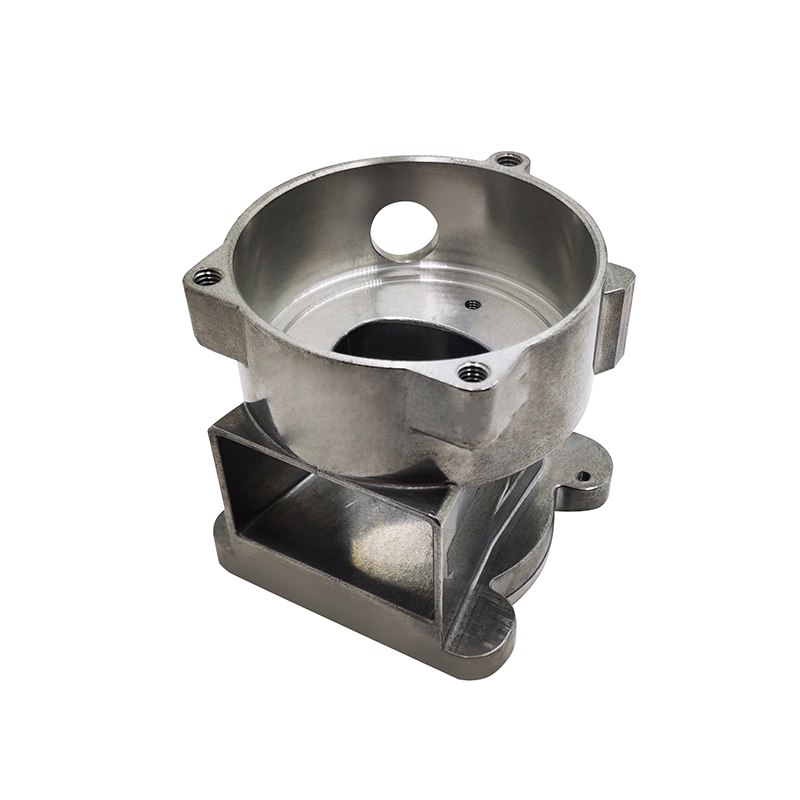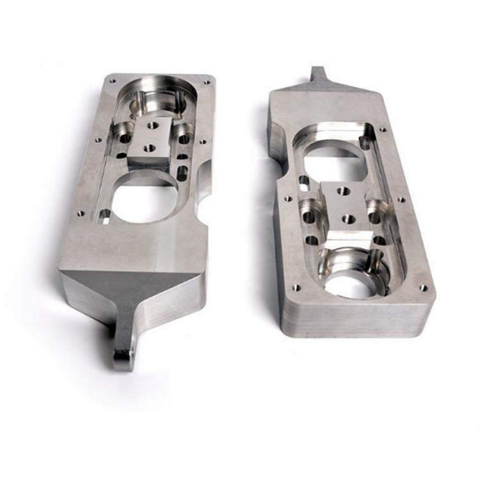Leading Industries that Benefit from aluminum casting
Wiki Article
Aluminum Casting Explained: Secret Truths and Insights for Industry Professionals
Aluminum casting acts as a crucial process in contemporary manufacturing, forming elements throughout different sectors. Its diverse approaches, such as sand and die casting, deal with different manufacturing requirements. The distinct buildings of aluminum alloys improve their applicability, yet tests remain in keeping high quality and effectiveness. Comprehending these elements is vital for market experts. What are the most recent innovations and ideal techniques that can further optimize this procedure?Introduction of Aluminum Casting Processes

Crucial element of aluminum casting procedures include the preparation of molds, which might be made from sand, steel, or ceramic products, depending upon the intended use. Furthermore, temperature control is crucial to guarantee correct melting and solidification of aluminum.
The casting process permits for detailed layouts and can achieve high levels of dimensional accuracy. As soon as cooled, the spreadings may go through finishing procedures such as machining or surface area therapy to fulfill specific efficiency requirements. In general, aluminum casting acts as a flexible manufacturing method, efficiently meeting the varied needs of different markets.
Kinds of Aluminum Casting Techniques
In the domain of aluminum casting, numerous methods are used to accomplish different outcomes. Sand casting strategies supply flexibility and cost-effectiveness for intricate shapes, while die casting procedures supply high precision and effectiveness for automation. Recognizing these methods is essential for selecting the suitable strategy based on job demands.Sand Casting Strategies
Sand casting techniques stand for a basic method in aluminum casting, where sand is made use of as a mold product to form molten steel. This procedure involves producing a pattern from the wanted part, which is after that placed in a sand mix to form a mold and mildew. The sand is compressed around the pattern, and after removal, it produces a dental caries in the shape of the part. Molten aluminum is put right into this dental caries, allowing it to solidify and cool. One considerable advantage of sand casting is its convenience; it can suit complicated forms and large components. Furthermore, the materials utilized are relatively cost-effective, making it an easily accessible choice for different production applications in the aluminum market.Die Casting Processes
Die casting procedures are a famous technique for forming aluminum parts, making use of high-pressure strategies to compel molten steel into precisely engineered molds. This process is particularly preferred for its capacity to create complicated shapes with tight tolerances and a smooth surface. There are two primary kinds of die casting: hot chamber and chilly chamber. Warm chamber die casting appropriates for metals with reduced melting factors, permitting for faster production prices. Conversely, chilly chamber die casting is ideal for higher melting point steels, calling for a separate melting heating system. Both methods enhance effectiveness and lower product waste, making them essential in auto, aerospace, and customer items markets. Comprehending these processes helps specialists choose the most ideal strategy for their certain applications.Material Quality of Aluminum Alloys

Toughness and Sturdiness
Toughness and durability are important attributes of aluminum alloys that make them suitable for different casting applications. These products exhibit a beneficial strength-to-weight ratio, enabling for the development of lightweight yet robust components. With regard to tensile toughness, particular aluminum alloys can be engineered to endure substantial lots without flawing. This residential property is particularly important in industries such as aerospace and automobile, where performance and security are vital. Furthermore, aluminum alloys commonly retain their mechanical buildings under varied temperature level problems, making sure regular efficiency. The innate ductility of these alloys check my reference likewise enables efficient shaping during the casting process, making it simpler to produce complicated geometries. In general, the strength and resilience of aluminum alloys add significantly to their widespread usage in sophisticated applications.Rust Resistance Characteristics
While aluminum alloys are prized for their strength and light-weight buildings, their deterioration resistance is an additional crucial feature that enhances their suitability for various applications. Aluminum naturally develops a safety oxide layer when revealed to dampness, which helps to avoid more oxidation. This inherent property makes aluminum alloys especially valuable in atmospheres vulnerable to corrosion, such as aquatic and commercial setups. Additionally, various alloy structures can affect resistance levels, with certain alloys especially engineered to boost this characteristic. Therapies like anodizing can better improve deterioration resistance by enlarging the oxide layer. Comprehending the deterioration resistance of aluminum alloys is important for sector professionals when choosing products for projects needing durability and long life in challenging atmospheres.Benefits of Aluminum Casting in Manufacturing
Aluminum casting deals special info many benefits in production, making it a recommended selection for different sectors. One significant benefit is its light-weight nature, which adds to reduced transportation prices and boosted energy performance in final result. Aluminum's exceptional thermal and electric conductivity boosts performance in applications needing warm dissipation or electric conduction.The material's capability to be cast into elaborate shapes permits design flexibility, decreasing the need for added machining procedures. On top of that, aluminum casting displays remarkable rust resistance, bring about longer item life-spans and reduced maintenance expenses.

Typical Applications of Aluminum Castings
The adaptability of aluminum casting allows its widespread use across different markets. Usual applications include automotive parts, where light-weight and corrosion-resistant parts, such as engine blocks and transmission housings, improve lorry performance. In the aerospace industry, aluminum castings are made use of for architectural components, offering strength without adding substantial weight.
Furthermore, the electric sector advantages from aluminum spreadings in making rooms and warmth sinks, where thermal conductivity is essential. The consumer items sector additionally integrates aluminum spreadings in items like cooking equipment, furnishings, and ornamental items, combining looks with capability.
In addition, the building sector utilizes aluminum castings for architectural aspects, window frames, and fixtures, which provide toughness and layout versatility. In general, the varied applications of aluminum spreadings highlight their significance in modern production, adding to developments in efficiency and product design across several areas.
Developments and Technical Improvements
As markets remain to evolve, technologies in aluminum casting innovation are transforming manufacturing procedures and product capacities. Advancements in 3D printing and additive production have actually made it possible for the development of complicated geometries that were formerly difficult to achieve with typical methods. These modern technologies permit fast prototyping, minimizing lead times and costs.In addition, improvements in mold and mildew design and materials have enhanced the casting process by raising performance and lowering waste. The assimilation of clever production strategies, such as IoT gadgets and real-time information analytics, permits much better monitoring and optimization of production criteria, resulting in greater top quality outputs.
In addition, developments in aluminum alloys give enhanced toughness, corrosion resistance, and lightweight residential properties, dealing with the growing needs in auto and aerospace markets. Collectively, these advancements are not just boosting performance yet additionally meeting the rigorous standards of modern engineering applications.
Best Practices for Quality Assurance in Aluminum Casting
Making sure high-grade results in aluminum casting calls for adherence to ideal techniques that encompass various stages of the manufacturing procedure. Initially, detailed product examination is essential to validate the high quality of aluminum alloys utilized, as contaminations can considerably impact the final product. you can check here Applying exact melting and pouring techniques minimizes issues; preserving suitable temperatures avoids oxidation and advertises harmony.Mold layout plays a vital role; utilizing computer-aided design (CAD) can enhance accuracy and reduce human mistake. Regular tracking of the cooling process is vital to avoid bending and shrinkage. In addition, using non-destructive testing approaches, such as ultrasonic or X-ray evaluations, aids identify interior flaws without damaging the parts.
Developing a responses loop with engineers and drivers cultivates continuous renovation, ensuring that quality control procedures evolve alongside technological improvements. By adhering to these best practices, suppliers can enhance the dependability and efficiency of aluminum spreadings.
Regularly Asked Inquiries
What Are the Environmental Effects of Aluminum Casting?
The ecological influences of aluminum casting include substantial energy usage, greenhouse gas discharges, and possible water pollution from foundry operations. Furthermore, bauxite mining for aluminum ore can lead to habitat destruction and soil degradation.How Does Aluminum Casting Compare to Other Metal Casting Procedures?
Aluminum casting generally provides advantages in lightweight components and deterioration resistance contrasted to other processes, such as iron or steel casting, which might provide better toughness yet lead to much heavier and less corrosion-resistant products. - aluminum castingWhat Are Usual Defects in Aluminum Castings and Their Reasons?
Usual flaws in aluminum castings include porosity, contraction, and incorporations. Reasons often stem from incorrect pouring strategies, insufficient mold layout, or contamination of the liquified metal, impacting the last product's honesty and efficiency.What Safety Precautions Should Be Taken Throughout Aluminum Casting?
During aluminum casting, important safety preventative measures include putting on protective equipment, making certain appropriate air flow, preserving a clean work space, dealing with molten metal with treatment, and complying with recognized protocols to decrease dangers of burns, inhalation threats, and mishaps.Just How Can I Enhance the Performance of My Aluminum Casting Workflow?
To boost effectiveness in aluminum casting procedures, one ought to maximize mold style, streamline material handling, use automated processes, conduct routine upkeep on devices, and purchase worker training to enhance abilities and productivity.Numerous techniques exist, aluminum casting encompasses numerous primary processes that cater to various applications and needs. Key aspects of aluminum casting procedures consist of the preparation of molds, which may be made from sand, metal, or ceramic products, depending on the intended use. Sand casting techniques stand for an essential method in aluminum casting, where sand is utilized as a mold and mildew material to form liquified steel. As sectors proceed to advance, innovations in aluminum casting technology are changing production procedures and product capacities. Ensuring high-quality results in aluminum casting requires adherence to best practices that include numerous phases of the manufacturing procedure.
Report this wiki page